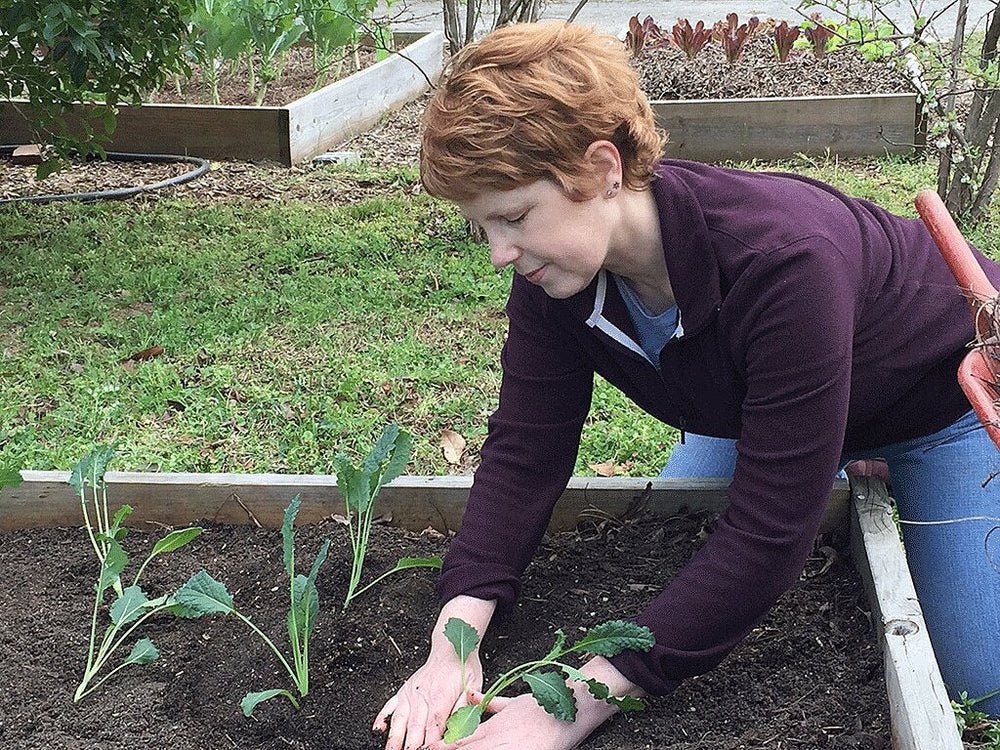I was born a plant killer – at least, that's what I believed for most of my life. Due to the inability to distinguish between "weeds" and "the plants we want to keep," my childhood involvement in my Grandpa's immense vegetable garden was limited to piling my bike basket full of freshly-picked cucumbers and corn, and enjoying my Nana's homemade pickles at Thanksgiving.
Even after I grew up and got married, I considered my thumb to be as blackened as a piece of catfish at a Southern cookout. It seemed every plant I cared for met an untimely death. Consequently, my role in "our" modest garden (tomatoes, collards, okra) was to refrain from interacting with any plant until it was time to harvest. That way, if I killed it, at least we'd get something to eat out of the deal.


I understood that my black-thumbed ways had to be contained, but oh, how I longed to plunge those same thumbs into the dirt and actually grow something myself.
When the seed catalogs came (always in my husband Eric's name – it seemed even the seed companies knew I wasn't to be trusted with a living thing), I would pore over them, picking out the "dream veggies" I'd plant if only they'd have a chance at reaching a harvestable age. When Eric brought Bonnie seedlings home and tucked them into the soil, I'd crouch nearby (careful not to touch), mesmerized by their vibrant green promise.]
And then, Fate intervened. In the fall of 2012, despite my garden-related shortcomings, the very same Bonnie Plants hired me to manage their website content — with one caveat: that I would enroll in the upcoming Master Gardener course at the Birmingham Botanical Gardens and actually learn something about growing plants.
Between that and the fact that I began spending my work days reviewing the many, many how-to-garden articles on the Bonnie website, I learned not only about growing, but about planting, tending, and troubleshooting. With great trepidation, I planted my first garden (lettuce, kale, collards, spinach, Swiss chard) and informed my husband that I would be caring for it by myself. (To his credit, he didn't flinch.)
I followed what I'd learned very carefully, filling my new raised beds and containers with potting soil, adding compost, spacing the plants properly, watering them regularly (but not too much), giving them plant food, laying mulch around them, keeping an eye out for pests. Whenever I had a question, I would consult this website or my Master Gardener binder. Then, I waited for the plants to die.
They didn't.
Instead, they grew and thrived and produced harvest after harvest of greens. Emboldened, I planted a summer garden with tomatoes, peppers, cucumbers, and basil. Those plants thrived too. What was going on?
And that's when I had my epiphany: That black thumb I'd been saddled with all my life wasn't incurable. It wasn't something I had to resign myself to, like having big ears or bad eyesight.
The cause of my black thumb? Lack of knowledge, pure and simple.
Granted, I get more daily exposure to garden information than most folks. But that information — aka the cure for black thumb — is out there and available to every aspiring gardener. With resources like this very website, local extension services, and more, there's really no reason for anyone to have to suffer from black thumb.
Now don't get me wrong – I'm not perfect. I still kill plants, but in much smaller numbers than before. And when I do lose a plant, I try to figure out what happened and what I can do better next time. Because now that I know the basics of gardening – and where to go to find out all the things I don't know – there will always be a next time.
Article written by Su Reid-St. John, former Marketing Producer for Bonnie Plants




 Herbs
Herbs
 Vegetables
Vegetables
 Fruit
Fruit
 Flowers
Flowers
 Succulents
Succulents


